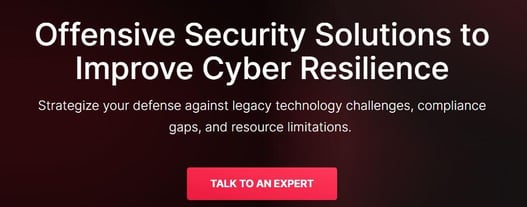
2024-5-10 21:15:0 Author: www.trustwave.com(查看原文) 阅读量:0 收藏
The Canadian, US, and UK governments issued a series of recommendations in their just-released security alert Defending OT Operations Against Ongoing Pro-Russia Hacktivist Activity, which mirror my own insights on the important topic. The alert notes that all three governments are aware of pro-Russia hacktivists targeting and compromising small-scale OT systems in North American and European Water and Wastewater Systems (WWS), Dams, Energy, and Food and Agriculture sectors. These hacktivists seek to compromise modular, Internet-exposed industrial control systems (ICS) through their software components, such as human-machine interfaces (HMIs), by exploiting virtual network computing (VNC) remote access software and default passwords. At this point, with these pro-Russia hacktivists potentially in or able to get into our water and wastewater systems since 2022, the defensive measures these operators can take are somewhat limited, but as we shall detail, the WWS, and other sectors do have some moves. Trustwave recommends WWS and other potential OT targets update and upgrade wherever possible. In addition, the best steps to take involve truly segmenting, isolating, or air-gapping their systems. This action will ensure that they have proven backup and recovery capabilities in place in case of attack. In addition, operators must vigilantly monitor their systems for malicious activity. They must also ensure their systems are monitoring the safety of the water going to the public and are resilient enough to enable shutoff if the worst should happen. CISA does practice what it preaches. CISA Director Jen Easterly recently explained one of the steps her agency took to secure its systems. “First, we deployed threat-hunting teams across multiple sectors, water, power, energy, and transportation to find and eradicate these Chinese cyber actors. And we've shared insights with others before they become victims,” Easterly said. “Now these PRC hunting missions are just part of our larger hunting missions. In just FY '23, we conducted 97 hunt engagements to eradicate threat actors from US critical infrastructure and we shared over 1,100 cyber advisories to enable risk reduction at scale.” Finally, in addition to the recent 97 CISA-led threat hunting engagements across water, power, energy, and transportation as noted by Jen Easterly, Director of CISA, the 153,000 public drinking systems and 16,000 publicly owned WWS operators may also want to consider aligning with the private sector providers such as Trustwave’s SpiderLabs for penetration or offensive security testing engagement to identify weaknesses that may be exposing their systems and if any are found, they may want to go to the next step of a digital forensics investigation. The report noted that hacktivist activity against these sectors appears mostly limited to unsophisticated techniques that manipulate ICS equipment to create nuisance effects. However, investigations have identified that these actors can pose physical threats against insecure and misconfigured OT environments. The government agencies have observed pro-Russia hacktivists gaining remote access via a combination of exploiting publicly exposed internet-facing connections and outdated VNC software, as well as using the HMIs’ factory default passwords and weak passwords without multifactor authentication. So far, in 2024, North American and UK investigators have responded to several WWS attacks. In these cases, the pro-Russian groups created limited physical disruptions by remotely manipulating HMIs. Specifically, manipulating HMIs has caused water pumps and blower equipment to exceed their normal operating parameters. In each case, the hacktivists maxed out set points, altered other settings, turned off alarm mechanisms, and changed administrative passwords to lock out the WWS operators. Some victims experienced minor tank overflow events; however, most victims reverted to manual controls in the immediate aftermath and quickly restored operations. The pro-Russia hacktivists use a variety of techniques to gain remote access to the HMIs and make changes to the underlying OT: Security organizations from the reporting nations offered several security steps to implement. First and foremost: Additional mitigations aligned with the Cross-Sector Cybersecurity Performance Goals (CPGs) developed by CISA and the National Institute of Standards and Technology (NIST) were posted specifically to harden HMI remote access.The Hacktivist Threat
Mitigations
Latest Trustwave Blogs
Trustwave Names Keith Ibarguen as Senior Vice President of Engineering
Keith Ibarguen has been named Trustwave's Senior Vice President of Engineering, from which he will leverage his extensive experience in software, cybersecurity, and leadership to lead Trustwave's...
Uncovering the Dirty Secret of Open-Source Code and Its Risks for Organizations
Using open-source code exposes organizations to a tremendous amount of risk, yet this point is treated like a dirty little secret that nobody talks about. So, let’s live on the edge and take a minute...
Trustwave Named as a Leader in the 2024 IDC MarketScape for Worldwide Emerging MDR Services
Trustwave has been positioned in the Leaders Category in the IDC MarketScape for Worldwide Emerging Managed Detection and Response (MDR) Services 2024 Vendor Assessment (doc #US50101523 April 2024).
如有侵权请联系:admin#unsafe.sh
